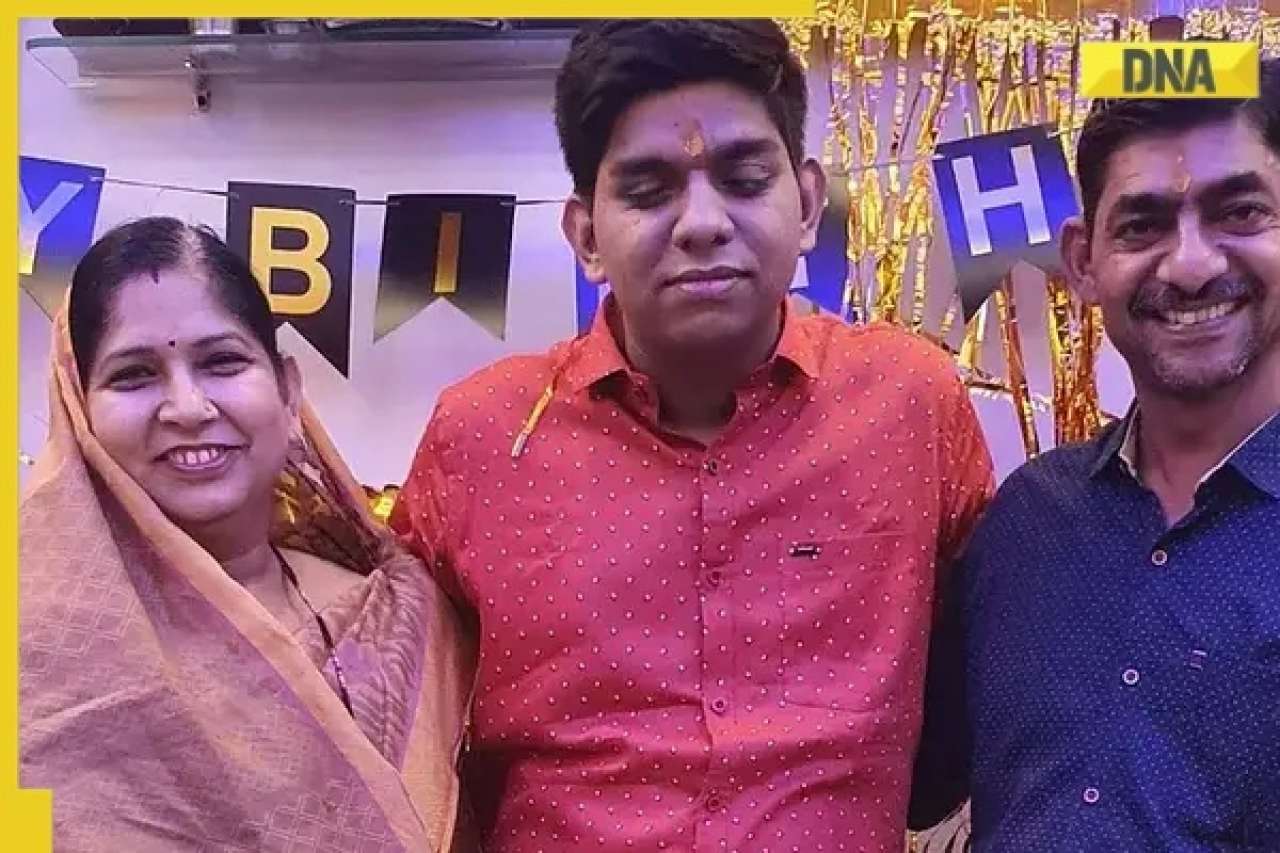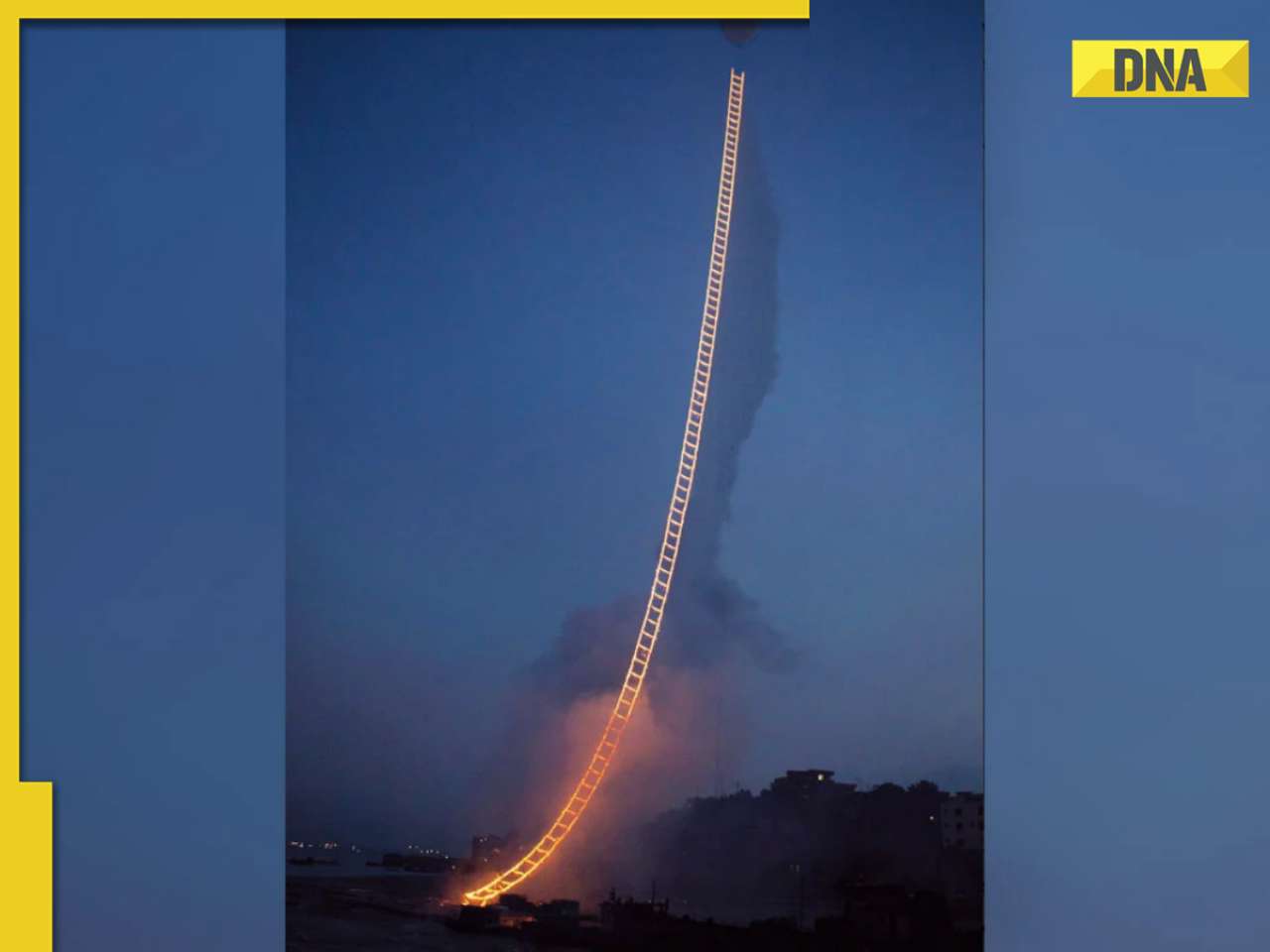But once fog starts playing havoc with air traffic, then everything goes for a toss. Even if five flights get delayed there are around 700 passengers who get stranded.
When fog starts playing havoc everything goes for a toss in air as well as on ground. In air, each aircraft should be kept in a particular route at a fixed level and distance and on the ground the scene is one of utter chaos, lost tempers and often fisticuffs. Yogesh Kumar defogs the fog
Space crunch
According to rough estimates, around 50,000 domestic passengers fly into the Delhi airport in over 600 flights every day.
On its part, the Delhi International Airport Limited (DIAL) has made a makeshift extension of terminal 1B in the airport to accommodate 600 to 800 passengers at any point of time.
But once fog starts playing havoc with air traffic, then everything goes for a toss. Even if five flights get delayed there are around 700 passengers who get stranded. The airport bursts at its seams.
Inside it is really bad. Security hold, passengers lounge and all other areas are packed. In this scenario, the makeshift extension in terminal IB will not be sufficient for large number of passengers stranded due to flight disruptions and cancellations.
To cool off frayed tempers in case of delays, the airlines might dole out food coupons or refreshments to passengers but its not the solution.
Furious passengers spilling out of the airport to catch a fresh breath of air and cursing the airlines will be a common sight.
No two runways
In foggy condition, the two runway operation goes for a six. The DIAL has started simultaneous runway operation to decongest air traffic in the airport that handles over 600 flight movements every day.
The simultaneous runway operation is on from 6 am to 1 pm and then 4 pm to 10 pm everyday. According to international rules, simultaneous runway operations are carried out when the runway visibility is 1,000 metres.
And in Delhi, the morning visibility hovers between 200 to 500 metres. So this means the DIAL has to abandon the two-runway operations and switch to single runway during foggy conditions.
And this will mean slow air traffic movements and delays in flights originating from Delhi during poor weather conditions.
More parking bays have been made in the airport but that does not mean there will be no air congestion when fog strikes the capital’s skyline.
When dust adds to fog
Construction activities inside the airport will only add to the misery brought in by fog. Airport officials say that construction work will only prolong the spell of fog.
“Construction activity throws up a lots of dust particles into air and when fog patches settle in the air it would make the situation worse,” said an official. This, he said, will delay the clearing of the fog.
Pilot shortage
Landing in poor visibility fog conditions requires special training of pilots which all the airlines find very expensive.
Baring some Indian Airlines and some private airlines, not many have specially trained pilots.
“The CAT 3 approaches require a pilot to be adequately trained and certified for landing and taking off in poor visibility. The director-general of the civil aviation has instructed airlines to use suitably trained pilots for Delhi sector to make sure that the fog delays are minimal,” said a DGCA official.
But the fact remains that the airlines instead of going for expensive training of pilots opt for the smart way of rescheduling flights during winters.
Chaos on ground
In most cases, the weather forecasts talk about the exact time when the fog will reduce the runway visibility and this news is flashed to all airlines immediately.
The problem begins when fog suddenly appears and reduces the visibility to CAT-III operations (see box). Early morning fog throws the airport upside down. But if it is evening or night, things get really scary for those manning the apron and air traffic management tower.
“The poor visibility (200 metres or below) due to fog just throws all flight schedules haywire, the most important thing is to make sure that no aircraft comes close to another and then comes the aircraft which has reached start off point near runway,” said an senior airport official.
The first thing the control tower does is to change the flight schedules of all aircraft as per the pilot’s minima certification.
“Suppose the CAT-III condition is on, then the aircraft whose pilot has the certificate or his visibility minima required for take off, will be asked to fly. And others who don’t have it will be asked to hang on,” said an air traffic controller.
Once the visibility starts to get worse the airport apron control becomes the nerve centre. The apron control manager handles the real chaos inside the operational area during foggy weather.
“For apron controllers it is a very ticklish situation. Everything becomes problematic and slow — be it the follow-me jeeps which guide aircraft while taxiing buses ferrying passengers or managing runway lights and other movements on ground,” said an apron control manger on condition of anonymity.
He admitted that the fog takes the pace out of all work. “In normal conditions it takes four minutes to take the aircraft to its bay after landing, but in poor visibility it becomes nine to ten minutes and it’s the same for bringing the aircraft to start-up point for take off,” he pointed out.
Senior officials admit that parking becomes the biggest problem in the airport during fog.
“Every airline wants to park aircraft here in Delhi but during fog it becomes very difficult to accommodate so many aircraft since there are only 55 CAT-III parking bays for domestic airlines, and during the fog the situation will get worse,” said the official.
Confusion mid-air
Once the fog has dipped the runway visibility below 300 metres all the aircraft approaching Delhi are informed about the visibility.
At any given point of time there may be 15 to 20 aircraft waiting for landing in Delhi. Some of them might get landing clearance while others opt for alternative destinations.
“The first thing the controllers do is to ask whether the pilots can fly in the prevailing runway visibility and if he can then he is brought in front of the mid-air line up,” said a controller.
The problem gets worse when the visibility is just below the required level of landing or taking off. In that condition then aircraft keeps hovering over Delhi airspace.
“One has to be very careful in such conditions and normally aircraft are kept at seven to eight nautical miles of separation in air. The horizontal and vertical separation is increased for security reasons because many them want to fly to alternative destinations,” said a controller.
The real test for air traffic controller is to coordinate different airports for guiding the aircraft to alternative destinations, which can be Lucknow, Jaipur and Ahemedabad airports.
It is a very serious job to line up aircraft for their alternative destination because a lot of things like parking availability and the amount of fuel left in the aircraft and other aspects are to be looked into.
The biggest tension for a pilot comes when he is short on fuel and his alternative destination is far when fog has messed up visibility in Delhi.
“To be honest it is the most scary thing for a pilot to be running on short fuel, and no parking space in near by airports. It requires a lot of concentration and coordination to make sure things don’t go wrong,” said a pilot on condition of anonymity.
He admitted that landing in Delhi airport during foggy condition is no cakewalk. “There are a lot of things, first is the touch down, then taxiing to bays with help of follow-me jeep which again requires a lot of patience and concentration which passengers never get to know while travelling,” said the pilot.
![submenu-img]() House of the Dragon season 2 trailer: Rhaenyra wages an unwinnable war against Aegon, Dance of the Dragons begins
House of the Dragon season 2 trailer: Rhaenyra wages an unwinnable war against Aegon, Dance of the Dragons begins![submenu-img]() Panchayat season 3 trailer: Jitendra Kumar returns as sachiv, Neena, Raghubir get embroiled in new political tussle
Panchayat season 3 trailer: Jitendra Kumar returns as sachiv, Neena, Raghubir get embroiled in new political tussle![submenu-img]() Apple partners up with Google against unwanted tracker, users will be alerted if…
Apple partners up with Google against unwanted tracker, users will be alerted if…![submenu-img]() Meet actress whose debut film was superhit, got married at peak of career, was left heartbroken, quit acting due to..
Meet actress whose debut film was superhit, got married at peak of career, was left heartbroken, quit acting due to..![submenu-img]() Who is the real owner of Delhi's Connaught Place and who collects rent from here?
Who is the real owner of Delhi's Connaught Place and who collects rent from here?![submenu-img]() Meet man who is 47, aspires to crack UPSC, has taken 73 Prelims, 43 Mains, Vikas Divyakirti is his...
Meet man who is 47, aspires to crack UPSC, has taken 73 Prelims, 43 Mains, Vikas Divyakirti is his...![submenu-img]() IIT graduate gets job with Rs 100 crore salary package, fired within a year, he is now working as…
IIT graduate gets job with Rs 100 crore salary package, fired within a year, he is now working as…![submenu-img]() Goa Board SSC Result 2024: GBSHSE Class 10 results to be out today; check time, direct link here
Goa Board SSC Result 2024: GBSHSE Class 10 results to be out today; check time, direct link here![submenu-img]() CUET-UG 2024 scheduled for tomorrow postponed for Delhi centres; check new exam date here
CUET-UG 2024 scheduled for tomorrow postponed for Delhi centres; check new exam date here![submenu-img]() Meet man who lost eyesight at 8, bagged record-breaking job package at Microsoft, not from IIT, NIT, VIT, his salary is…
Meet man who lost eyesight at 8, bagged record-breaking job package at Microsoft, not from IIT, NIT, VIT, his salary is…![submenu-img]() DNA Verified: Is CAA an anti-Muslim law? Centre terms news report as 'misleading'
DNA Verified: Is CAA an anti-Muslim law? Centre terms news report as 'misleading'![submenu-img]() DNA Verified: Lok Sabha Elections 2024 to be held on April 19? Know truth behind viral message
DNA Verified: Lok Sabha Elections 2024 to be held on April 19? Know truth behind viral message![submenu-img]() DNA Verified: Modi govt giving students free laptops under 'One Student One Laptop' scheme? Know truth here
DNA Verified: Modi govt giving students free laptops under 'One Student One Laptop' scheme? Know truth here![submenu-img]() DNA Verified: Shah Rukh Khan denies reports of his role in release of India's naval officers from Qatar
DNA Verified: Shah Rukh Khan denies reports of his role in release of India's naval officers from Qatar![submenu-img]() DNA Verified: Is govt providing Rs 1.6 lakh benefit to girls under PM Ladli Laxmi Yojana? Know truth
DNA Verified: Is govt providing Rs 1.6 lakh benefit to girls under PM Ladli Laxmi Yojana? Know truth![submenu-img]() Ananya Panday stuns in unseen bikini pictures in first post amid breakup reports, fans call it 'Aditya Roy Kapur's loss'
Ananya Panday stuns in unseen bikini pictures in first post amid breakup reports, fans call it 'Aditya Roy Kapur's loss'![submenu-img]() Remember Harsh Lunia? Just Mohabbat child star, here's how former actor looks now, his wife is Bollywood's popular...
Remember Harsh Lunia? Just Mohabbat child star, here's how former actor looks now, his wife is Bollywood's popular...![submenu-img]() Mother's Day 2024: Bollywood supermoms who balance motherhood, acting, and run multi-crore businesses
Mother's Day 2024: Bollywood supermoms who balance motherhood, acting, and run multi-crore businesses![submenu-img]() Rocky Aur Rani's Golu aka Anjali Anand shocks fans with drastic weight loss without gym, says fitness secret is...
Rocky Aur Rani's Golu aka Anjali Anand shocks fans with drastic weight loss without gym, says fitness secret is...![submenu-img]() In pics: Ram Charan gets mobbed by fans during his visit to Pithapuram for ‘indirect campaign’ for uncle Pawan Kalyan
In pics: Ram Charan gets mobbed by fans during his visit to Pithapuram for ‘indirect campaign’ for uncle Pawan Kalyan![submenu-img]() Haryana Political Crisis: Will 3 independent MLAs support withdrawal impact the present Nayab Saini led-BJP government?
Haryana Political Crisis: Will 3 independent MLAs support withdrawal impact the present Nayab Saini led-BJP government?![submenu-img]() DNA Explainer: Why Harvey Weinstein's rape conviction was overturned, will beleaguered Hollywood mogul get out of jail?
DNA Explainer: Why Harvey Weinstein's rape conviction was overturned, will beleaguered Hollywood mogul get out of jail?![submenu-img]() What is inheritance tax?
What is inheritance tax?![submenu-img]() DNA Explainer: What is cloud seeding which is blamed for wreaking havoc in Dubai?
DNA Explainer: What is cloud seeding which is blamed for wreaking havoc in Dubai?![submenu-img]() DNA Explainer: What is Israel's Arrow-3 defence system used to intercept Iran's missile attack?
DNA Explainer: What is Israel's Arrow-3 defence system used to intercept Iran's missile attack?![submenu-img]() House of the Dragon season 2 trailer: Rhaenyra wages an unwinnable war against Aegon, Dance of the Dragons begins
House of the Dragon season 2 trailer: Rhaenyra wages an unwinnable war against Aegon, Dance of the Dragons begins![submenu-img]() Panchayat season 3 trailer: Jitendra Kumar returns as sachiv, Neena, Raghubir get embroiled in new political tussle
Panchayat season 3 trailer: Jitendra Kumar returns as sachiv, Neena, Raghubir get embroiled in new political tussle![submenu-img]() Meet actress whose debut film was superhit, got married at peak of career, was left heartbroken, quit acting due to..
Meet actress whose debut film was superhit, got married at peak of career, was left heartbroken, quit acting due to..![submenu-img]() 'Ek actress 9 log saath leke...': Farah Khan criticises entourage culture in Bollywood
'Ek actress 9 log saath leke...': Farah Khan criticises entourage culture in Bollywood![submenu-img]() Bollywood’s 1st multi-starrer had 8 stars, makers were told not to cast Kapoors; not Sholay, Nagin, Shaan, Jaani Dushman
Bollywood’s 1st multi-starrer had 8 stars, makers were told not to cast Kapoors; not Sholay, Nagin, Shaan, Jaani Dushman![submenu-img]() Who is the real owner of Delhi's Connaught Place and who collects rent from here?
Who is the real owner of Delhi's Connaught Place and who collects rent from here?![submenu-img]() Viral video: Chinese artist's flaming 'stairway to heaven' stuns internet, watch
Viral video: Chinese artist's flaming 'stairway to heaven' stuns internet, watch![submenu-img]() Video: White House plays 'Sare Jahan Se Achha Hindustan Hamara" at AANHPI heritage month celebration
Video: White House plays 'Sare Jahan Se Achha Hindustan Hamara" at AANHPI heritage month celebration![submenu-img]() Viral video: Bear rides motorcycle sidecar in Russia, internet is stunned
Viral video: Bear rides motorcycle sidecar in Russia, internet is stunned![submenu-img]() Driver caught on camera running over female toll plaza staff on Delhi-Meerut expressway, watch video
Driver caught on camera running over female toll plaza staff on Delhi-Meerut expressway, watch video










































)
)
)
)
)
)